The educational materials listed on this page are about Biological Control.
What is biological pest control? Biological pest control mitigates agricultural pest damage by introducing or enhancing the population of pathogens, parasites or predators which prey upon the targeted pest. Biological control is often used in tandem with other pest management strategies, including physical control, cultural control and chemical controls.
There are three types of biological pest control. Classical biological control is the importation and release of natural beneficial insects for the biological control of exotic pests. Augmentation refers to the addition to the population of a natural enemy in a field where it is not currently present, or present only in small number. Producers who conserve the populations of augmented natural enemies or the ones that are already present in and around their fields are using conservation biological control. Biological pest control examples include the release of parasitic wasps to control corn borer, and lady beetles to control aphids in a wide range of crops. Biological pest control methods also include the integration of flowering crops and cover crops, vegetated buffer zones and crop rotations to provide beneficial enemies with adequate habitat.
The advantages of using biological pest control include the capacity to establish a sustainable population of predators that target a specific pest, avoiding the need for costly non-discriminatory pesticides (including biological pesticides) which can negatively impact the crop and/or beneficial organisms such as pollinators. The disadvantages of biological pest control include the risk of unpredictable and detrimental impacts on non-target species, which can reduce biodiversity in the agroecosystem.
SARE's Manage Insects on Your Farm describes the role biological control plays in ecological pest management. A Whole Farm Approach to Managing Pests provides insights on how to rethink farming systems from the ground up to incorporate pest management into the entire production system. Cover Cropping for Pollinators and Beneficial Insects outlines how to select and manage cover crops to attract beneficial insects.
Showing 1-10 of 12 results
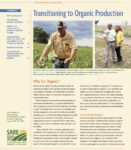
Transitioning to Organic Production
Transitioning to Organic Production lays out many promising conversion strategies, covering typical organic farming production practices, innovative marketing ideas and federal standards for certified organic crop production.
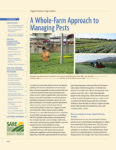
A Whole Farm Approach to Managing Pests
This 16-page bulletin helps producers—and the educators who work with them—use ecological principles across the entire farm to control pests.
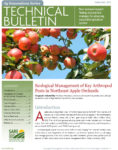
Ecological Management of Key Arthropod Pests in Northeast Apple Orchards
Apples are an important crop in the Northeast, grown for both fresh market and processing. Growers have a challenging task managing insects, mites and diseases. By some estimates, growers may spend up to 25 percent of their production costs on pest management. This technical bulletin outlines strategies developed from SARE-funded projects in Massachusetts and Pennsylvania, including biologically based pest control, orchard architecture and development of materials approved for organic production.
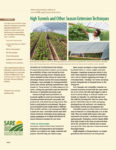
High Tunnels and Other Season Extension Techniques
From low covers to high tunnels, from hoop houses to greenhouses—producers are finding ever more innovative ways to extend the growing season, and their income stream.
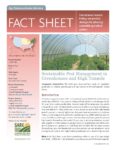
Sustainable Pest Management in Greenhouses and High Tunnels
From 2007 to 2009, Cornell researchers in New York used a SARE grant to study the efficacy of biological insect control in minimally heated greenhouses and high tunnels or hoop houses. This fact sheet reports the results and provides detailed advice on how growers can use natural enemies to manage insect pests in minimally heated greenhouses and unheated high tunnels.
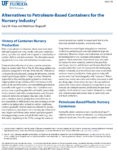
Moving Nursery Producers Toward Sustainable Practices Fact Sheets
These fact sheets discuss alternative containers, marketing and crop selection, alternatives to synthetic herbicides and integrated pest management in commercial nursery plant production.
Developing Successful Organic Horticulture Farms: Practical Training for Ag Professionals
A series of Power Point presentations developed for ag professionals on the principles of organic farming, building soil quality, and managing weeds, pests and diseases.
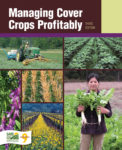
Managing Cover Crops Profitably, 3rd Edition
Managing Cover Crops Profitably explores how and why cover crops work and provides all the information needed to build cover crops into any farming operation.
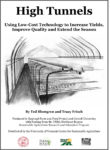
High Tunnels
This manual on using high tunnels or hoop houses for season extension includes case studies, a supplier list and chapters on marketing, site selection, construction and types, and soil, pest and environmental management.
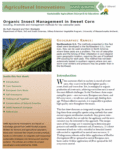
Organic Insect Management in Sweet Corn
This fact sheet discusses an integrated strategy for controlling three caterpillar species—corn earworm, European corn borer and fall armyworm—using methods that meet current organic certification standards. Any grower interested in methods that are safe for the applicator and the environment may be interested in this approach.